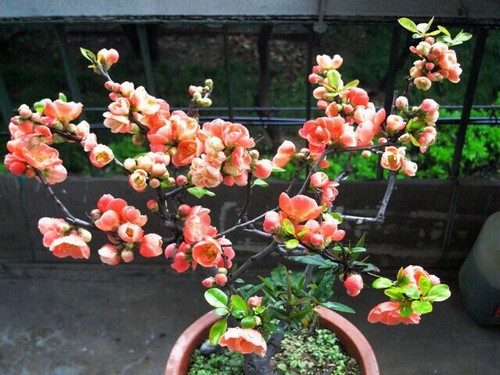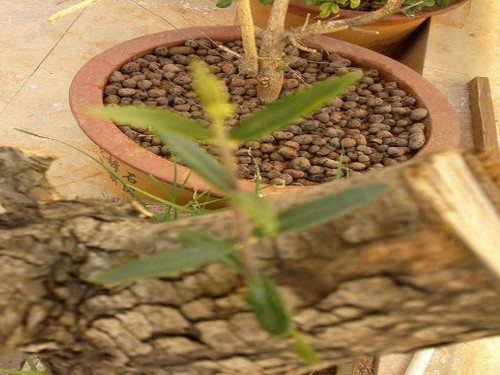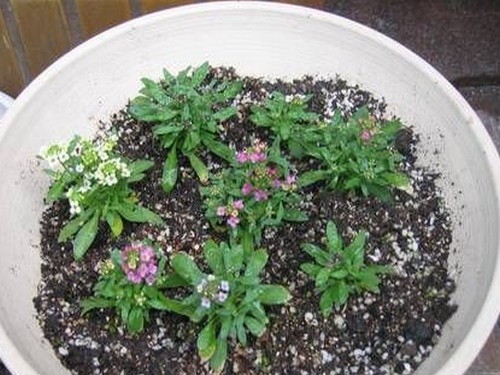Planting technique of Tripterygium
Paste stem begonia known as "immortal in the flower" laudatory name, the delicate beauty of flower powder, white elegance, red warm. There is a bit of pride in monopolizing the branches when there are no green leaves, so refreshing blooming in the spring. When there are green leaves in contrast, the delicate leaves also give birth to a daughter's delicate state, showing its appearance so softly and shyly.

Sticking pedicel Begonia is an important flowering shrub, which can be planted in the corner of garden wall, roadside, forest edge, poolside planting or pot planting. Flowers are fresh and rich in glue, gorgeous and dazzling, it is one of the main spring flowers and trees in the courtyard, not only can be placed in the living room, but also can be arranged in the study, bedroom, balcony, but also as a potted ornamental, but also an ideal flower and fruit tree stump bonsai material.
Tripterygium can be propagated by means of ramet, striping, cutting, sowing and so on, and grafting is commonly used for some excellent varieties. The underground root can also be buried in a shallow basin, and many new buds will soon sprout and grow into multi-stem plants. Can also be used to grow for many years hanging roots and claws, quaint old piles to make bonsai, mostly after falling leaves in autumn to spring germination before transplanting, transplanting should take more soil, cut off the main root, leave more lateral root and fibrous root, and prune the branches, cut off the unnecessary branches, first planted in a larger tile pot or underground "raise billet". Pay attention to cold prevention in winter and maintain a certain air humidity, but the soil can not accumulate water. After survival, pay attention to the cultivation of transition branches and backbone branches, so that the skeleton is beautiful and the branches and dryness are too natural.
Tripterygium has no strict requirements on soil. General loam or sandy loam can grow well, especially in alluvial soil and gravelly soil. When potted, the garden soil with higher fertility should be used and some thicker sand grains should be mixed with it.
Tripterygium can endure both drought and barren, so its cultivation and management is relatively extensive. In order to make the plants grow luxuriantly and the flowers are colorful, proper water and fertilizer management should be carried out. Because it is sensitive to water and fertilizer, excessive water and fertilizer often lead to excessive growth and reduction of flowers. Under normal management, organic fertilizer (rotten barnyard manure or compost) is applied to the rhizosphere of the plant every autumn. Plant growth is not very thin, there is no need to topdressing in the growing period, the amount of organic fertilizer can be increased in autumn.
The growth of Tripterygium is more luxuriant, and the bushes are easy to be too dense, so pruning is an important management work. The main purpose of pruning is to improve the internal ventilation and light transmission conditions of the plant, to avoid the dense branches affecting the growth, the second is to control the annual branch tip to continue to grow upward, the basal bud can not germinate, the top technique can not be used to form flower buds. The pruning of the clump should be carried out every 1 ~ 2 years, and the thinning should be kept thick to fine. For annual branches, every year from defoliation to sprouting, except for thinning the thin and weak branches, all the new branches should be cut off from 2 big 3 to 1 big 2.
Common pests are aphids and red spiders. Aphids occur on new shoots in spring and autumn. Red spiders mostly occur after late May. For prevention and control methods, appropriate pesticides can be selected for spraying.
For the management of potted pedicel begonia, due to the limitation of the root system, it is necessary to pay attention to the management of water and fertilizer, otherwise it will affect the growth and result in sparse flowers. Generally, organic fertilizer should be applied once a year in late autumn or early winter, and liquid fertilizer should be applied once after flowering in spring. Topdressing should not be thick, can apply rotten cake fertilizer and water, and so on. Watering is appropriate to keep the soil moist.
Time: 2019-05-25 Click:
- Prev

Cultivation techniques of Robinia pseudoacacia
Robinia pseudoacacia wood is hard and resistant to moisture. Can be used for pillars, sleepers, vehicles, agricultural materials, leaves containing crude protein, is a good feed for many livestock, flowers are excellent nectar plants, Robinia pseudoacacia honey color white and transparent, welcomed by consumers, tender leaves are edible, has become a green vegetable for urban residents
- Next

The planting method of delphinium
Delphinium is a kind of taproot flower, which is better for direct seeding and is not resistant to transplanting. To plant delphinium, you can first sow the seeds on the sowing plate, and then hold the pot in the 10cm basin. During the growing period, the grass was fertilized once every semimonthly, and the phosphorus and potassium fertilizer was applied 2-3 times before flowering. Keeping the soil moisture during the flowering period can prolong the flowering period.
Related
- Fuxing push coffee new agricultural production and marketing class: lack of small-scale processing plants
- Jujube rice field leisure farm deep ploughing Yilan for five years to create a space for organic food and play
- Nongyu Farm-A trial of organic papaya for brave women with advanced technology
- Four points for attention in the prevention and control of diseases and insect pests of edible fungi
- How to add nutrient solution to Edible Fungi
- Is there any good way to control edible fungus mites?
- Open Inoculation Technology of Edible Fungi
- Is there any clever way to use fertilizer for edible fungus in winter?
- What agents are used to kill the pathogens of edible fungi in the mushroom shed?
- Rapid drying of Edible Fungi

